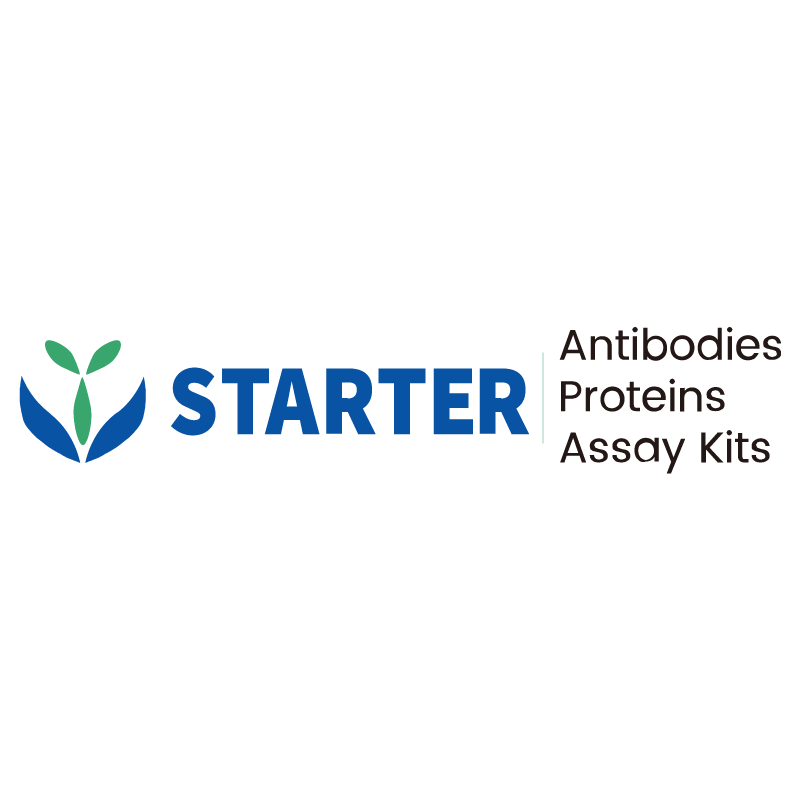WB result of LY9/CD229 Recombinant Rabbit mAb
Primary antibody: LY9/CD229 Recombinant Rabbit mAb at 1/1000 dilution
Lane 1: U937 whole cell lysate 20 µg
Lane 2: Daudi whole cell lysate 20 µg
Lane 3: Jurkat whole cell lysate 20 µg
Negative control: U937 whole cell lysate
Secondary antibody: Goat Anti-rabbit IgG, (H+L), HRP conjugated at 1/10000 dilution
Predicted MW: 72 kDa
Observed MW: 60-130 kDa
Product Details
Product Details
Product Specification
| Host | Rabbit |
| Antigen | LY9/CD229 |
| Synonyms | T-lymphocyte surface antigen Ly-9; Cell surface molecule Ly-9; Lymphocyte antigen 9; SLAM family member 3 (SLAMF3); Signaling lymphocytic activation molecule 3 |
| Immunogen | Recombinant Protein |
| Location | Cell membrane |
| Accession | Q9HBG7 |
| Clone Number | SDT-2393-47 |
| Antibody Type | Recombinant mAb |
| Isotype | IgG |
| Application | WB, IHC-P |
| Reactivity | Hu |
| Positive Sample | Daudi, Jurkat |
| Purification | Protein A |
| Concentration | 1 mg/ml |
| Conjugation | Unconjugated |
| Physical Appearance | Liquid |
| Storage Buffer | PBS |
| Stability & Storage | 12 months from date of receipt / reconstitution, 4°C as supplied |
Dilution
| application | dilution | species |
| WB | 1:1000 | Hu |
| IHC-P | 1:1000 | Hu |
Background
CD229, also known as LY9 or SLAMF3, is a 120 kDa type I transmembrane glycoprotein of the SLAM subgroup of the CD2 family, expressed on T, B, NK, dendritic and stem cells, that functions as a self-ligand through homophilic binding of its N-terminal IgV-like domain to regulate immune responses. Upon engagement, phosphorylation of two ITSM motifs in its long cytoplasmic tail recruits the adaptor proteins SAP or EAT-2 (or the phosphatases SHP-2/SHIP1), leading to signals that can either enhance or inhibit leukocyte activation, differentiation, cytokine production and cytotoxicity, depending on cellular context, and thereby controls processes such as T-cell adhesion and immunological synapse formation, Th17 polarization, maintenance of peripheral tolerance and prevention of autoimmunity, while its overexpression on malignant plasma and memory B cells has made CD229 a prognostic biomarker and CAR-T target in multiple myeloma and other B-cell malignancies.
Picture
Picture
Western Blot
Immunohistochemistry
IHC shows positive staining in paraffin-embedded human tonsil. Anti-LY9/CD229 antibody was used at 1/1000 dilution, followed by a HRP Polymer for Mouse & Rabbit IgG (ready to use). Counterstained with hematoxylin. Heat mediated antigen retrieval with Tris/EDTA buffer pH9.0 was performed before commencing with IHC staining protocol.
IHC shows positive staining in paraffin-embedded human spleen. Anti-LY9/CD229 antibody was used at 1/1000 dilution, followed by a HRP Polymer for Mouse & Rabbit IgG (ready to use). Counterstained with hematoxylin. Heat mediated antigen retrieval with Tris/EDTA buffer pH9.0 was performed before commencing with IHC staining protocol.
IHC shows positive staining in paraffin-embedded human myeloma. Anti-LY9/CD229 antibody was used at 1/1000 dilution, followed by a HRP Polymer for Mouse & Rabbit IgG (ready to use). Counterstained with hematoxylin. Heat mediated antigen retrieval with Tris/EDTA buffer pH9.0 was performed before commencing with IHC staining protocol.
IHC shows positive staining in paraffin-embedded human lung cancer. Anti-LY9/CD229 antibody was used at 1/1000 dilution, followed by a HRP Polymer for Mouse & Rabbit IgG (ready to use). Counterstained with hematoxylin. Heat mediated antigen retrieval with Tris/EDTA buffer pH9.0 was performed before commencing with IHC staining protocol.


